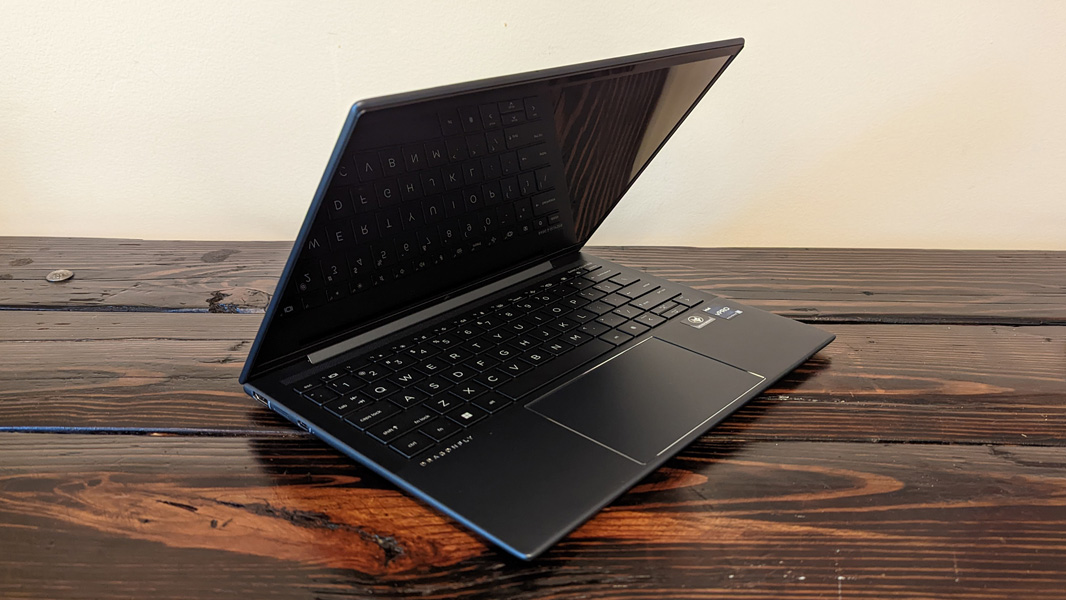HP Elite Dragonfly G3 First Impressions
- Paul Thurrott
- Aug 17, 2022
-
15

HP launched its first Elite Dragonfly over three years ago as a thin, light, and more colorful and attractive take on the EliteBook 1030. But it has rapidly evolved the Dragonfly since then, with Sure View Reflect and Tile integration in 2020, the Dragonfly Max in 2021, and now, the third-generation (G3) Dragonfly, which I was lucky enough to preview back in January when its Intel-based innards were still a mystery.
The quality of each generation of Dragonfly has been off the charts, but I really like where HP has gone with the G3, which eschews the convertible form factor of previous generation Dragonflies and adopts a more traditional clamshell-style laptop form factor. It’s like HP is reading my mind: the G3 even includes the lay-flat display feature I like.
Windows Intelligence In Your Inbox
Sign up for our new free newsletter to get three time-saving tips each Friday — and get free copies of Paul Thurrott's Windows 11 and Windows 10 Field Guides (normally $9.99) as a special welcome gift!
"*" indicates required fields

HP has also moved the display panel from the once common but less-than-ideal 16:9 aspect ratio to a taller 3:2 aspect ratio that provides a lot more room in the vertical and is more ideal for productivity work. This is absolutely an improvement, but I feel that 3:2 displays make more sense for tablets and convertibles and that 16:10 is perhaps the “right” aspect ratio for business-class productivity laptops. Whatever. It’s a win.

Thanks to the taller panel, the Dragonfly G3 display is now a 13.5-inch design, as opposed to the 13.3 inches on previous generation versions. And it can be had in Full HD+ (1920 x 1280) and WUXGA (3000 x 2000) variants; the former can optionally be configured with low power, touch, and Sure View privacy protection capabilities, while the latter is a brilliant OLED unit.
Aesthetically, HP has transformed something that was always beautiful into a work of art. The Dragonfly G3 is available in Slate Blue and Natural Silver colors, and the edges are all now rounded “pillow corners,” as HP calls them, which feels softer and more comfortable. And it still weighs less than 2.2 pounds, thanks to its hybrid aluminum and magnesium build, which is incredible and feels impossibly light.

The keyboard is among the many things I’ve loved about previous Dragonflies, and the G3 promises to somehow improve on a near-perfect typing experience with its quiet and soft rubber-domed keys. I wish it had that vertical row of Home, End, PgUp, and PgDn keys, but to be fair, no Dragonfly has ever offered that layout.

And the glass precision touchpad is larger than before, largely because the increased height of the display has impacted the wrist rest area too.

Expansion, as always, is excellent and in keeping with the needs of the business users who will buy this product. HP provides a full-sized HDMI 2.0 port, an optional nano-SIM card tray, and a single Thunderbolt 4/USB-C port on the left.

And there’s a full-sized USB-A 3.1 drop-jaw port, and second Thunderbolt 4/USB-C port on the right, along with a combo headphone/microphone jack and a nano lock slot on the right. That’s right, HP has answered another of my requests: there are Thunderbolt 4/USB-C ports on both sides of this PC. Hallelujah!

For the hybrid work world in which we now live, HP carries forward the 5 MP webcam that debuted in the Dragonfly Max, but it provides better clarity and brightness thanks to software tuning, HP says.

And there are two new edge microphones on the top display bezel, along with four Bang & Olufsen-tuned speakers—two top-firing tweeters and two bottom-firing woofers—that together provide two-way AI-based noise cancelation for work calls and meetings. Thanks to HP Dynamic Voice Leveling, the Dragonfly can automatically adjust the microphones to optimize voice clarity within 9 feet of the PC as well.

Connectivity is modern, with Wi-Fi 6E and optional broadband Internet with 4 x 4 antennas. HP claims market-leading ranges for 2.4, 5, and 6 GHz band connections.
Inside, you’ll find 12th-Gen Intel Core i5 and i7 U-series processors and Intel Iris Xe integrated graphics, 16 or 32 of RAM, and 256 GB, 512 GB, or 1 TB of PCIe NVMe SSD storage. (I guess that ends that mystery.) HP cools this thin device with dual fans that have smaller and quieter blades than before and a larger heat pipe, and the firm claims a 15 percent gain in steady state power over the previous generation, but with lower fan noise. Battery life is rated at up to 22 hours, albeit for video playback, and with over 5 hours more battery life than its predecessor. I will test this, of course, for some real-world results.

The Elite Dragonfly G3 is expensive, like expensive expensive, with prices starting at $1999 for a configuration with a Core i5-1235U processor, 16 GB of RAM, 512 GB of storage, and a Full HD+ touch panel. But you could spend about $3500 on a Dragonfly pretty easily, too. Yikes.
More soon.